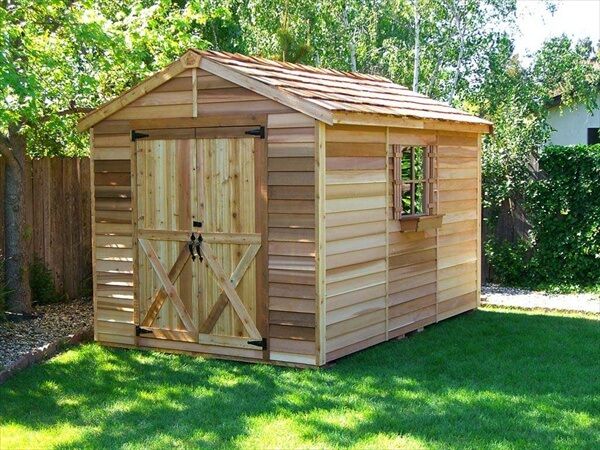Designing and Constructing a Shed with Loft: A Comprehensive DIY Guide
This guide provides a comprehensive overview of the design and construction process for a shed incorporating a loft. It is intended for individuals with basic carpentry skills and a willingness to dedicate time and effort to a meticulous project. While simplified for clarity, it is crucial to prioritize safety and adhere to local building codes throughout the entire process.
Phase 1: Planning and Design
Careful planning is paramount to a successful shed construction. Inadequate preparation can lead to costly errors and compromises in the final product. The following steps outline the crucial considerations in the planning phase.
1.1 Determining Requirements and Specifications
Begin by defining your needs. What will the shed be used for? The intended purpose will dictate size, features, and overall design. Consider the following:
- Storage Capacity: How much space do you require for tools, equipment, and other items? This will influence the shed’s overall dimensions.
- Loft Functionality: Will the loft be used for seasonal storage, a workspace, or something else? This impacts loft size, accessibility (ladder, stairs), and potential features (windows, electricity).
- Materials Budget: Establish a realistic budget for materials. Prices can vary significantly depending on choices in timber, roofing, and other components.
- Local Building Codes: Check your local building codes and regulations concerning shed construction, particularly regarding size limitations, permitted materials, and foundation requirements.
- Site Considerations: Assess your available land. Consider accessibility for delivery of materials, ground conditions, and proximity to utilities.
1.2 Developing the Shed Design
Once requirements are established, create a detailed design. This can be done through freehand sketches or using design software. Key design elements to consider:
- Overall Dimensions: Determine the length, width, and height of the shed, including the loft space. Account for sufficient headroom in both areas.
- Floor Plan: Draw a detailed floor plan showing the layout of the main floor and the loft. This should include placement of doors, windows, and any internal features.
- Loft Access: Designate the method of loft accessâ€"a fixed staircase, a pull-down ladder, or a combination. Consider the safety and convenience of each option.
- Roof Design: Choose a suitable roof design â€" gable, hip, or shed roof â€" considering factors like snow load, aesthetics, and ease of construction.
- Framing Details: Develop detailed plans for the wall and roof framing, specifying timber sizes and arrangements to ensure structural integrity.
1.3 Material Selection
Material selection significantly impacts the shed's durability, cost, and aesthetics. Consider the following:
- Timber: Pressure-treated lumber is essential for longevity, particularly for the foundation and framing. Consider the type and grade of timber based on budget and desired durability.
- Roofing: Select a roofing material appropriate for your climate and budget. Options include asphalt shingles, metal roofing, and corrugated plastic sheets. Consider factors such as longevity, maintenance requirements, and aesthetic appeal.
- Siding: Choose durable and weather-resistant siding. Options include wood, vinyl, or metal. Consider the aesthetic impact and maintenance needs.
- Fasteners: Use high-quality galvanized or stainless steel screws and nails to ensure durability and prevent rust.
- Insulation (Optional): If the shed is to be used year-round or for specific purposes, consider adding insulation to the walls and roof for temperature control.
Phase 2: Construction
The construction phase requires careful execution and attention to detail. This section outlines the key steps.
2.1 Foundation Preparation
A solid foundation is crucial for stability. Options include a concrete slab, concrete piers, or a pressure-treated timber base. Ensure the foundation is level and adequately sized to support the shed’s weight. Consider local soil conditions when choosing a foundation type.
2.2 Framing the Shed
Begin by constructing the floor frame, followed by the wall frames. Precise measurements and accurate cuts are vital. Use appropriate bracing to ensure structural integrity. Once the walls are erected, carefully construct the roof frame, paying close attention to rafter placement and connections.
2.3 Roofing Installation
Install underlayment before applying the chosen roofing material. Follow the manufacturer's instructions for proper installation to ensure waterproofing and durability. Ensure proper ventilation to prevent moisture buildup.
2.4 Siding and Trim
After the roof is complete, install the chosen siding material. Pay close attention to proper overlapping and sealing to prevent water penetration. Install trim to finish the exterior, adding aesthetic appeal and protecting the edges of the siding.
2.5 Loft Construction
The loft construction should be integrated into the overall framing process. This typically involves constructing a platform within the shed’s structure, supported by beams and joists. Ensure adequate headroom and safe access to the loft. Consider adding railings for safety.
2.6 Finishing Touches
Once the main structure is complete, add finishing touches such as windows, doors, and interior wall finishes. If desired, install electrical wiring (ensure compliance with electrical codes) and lighting. Apply a suitable sealant to protect the exterior wood from the elements.
Phase 3: Post-Construction
After construction, several important steps ensure the longevity and functionality of your shed.
3.1 Inspection and Adjustments
Thoroughly inspect the completed shed for any imperfections, structural issues, or needed repairs. Address any issues promptly before further use.
3.2 Maintenance
Regular maintenance is crucial to protect the shed from the elements and prevent deterioration. This includes periodic inspections, cleaning, repainting or restaining as necessary, and addressing any issues promptly.
3.3 Safety Considerations
Always prioritize safety during the entire process. Wear appropriate personal protective equipment (PPE), such as safety glasses, gloves, and hearing protection. Follow safe handling procedures for all materials and tools.
Building a shed with a loft is a rewarding project. However, it demands careful planning, meticulous execution, and a commitment to safety. By following these guidelines and adapting them to your specific requirements, you can create a functional and aesthetically pleasing addition to your property.







